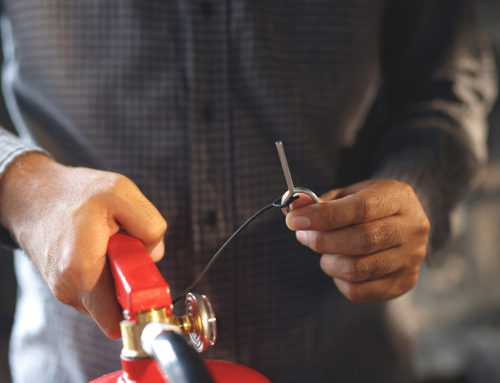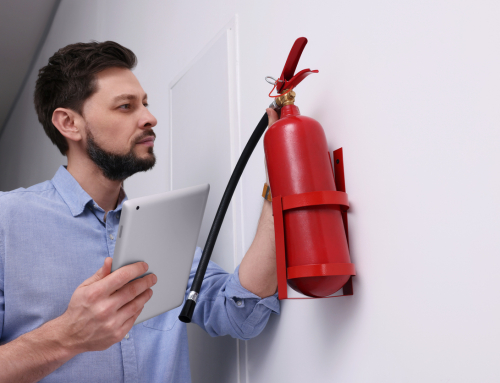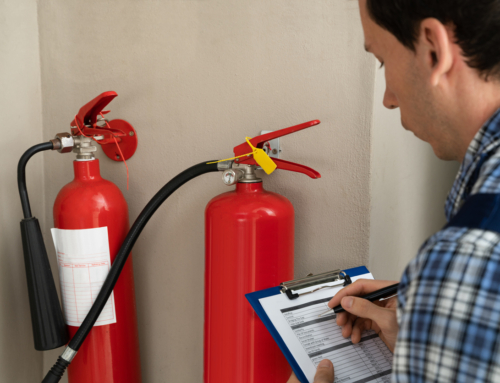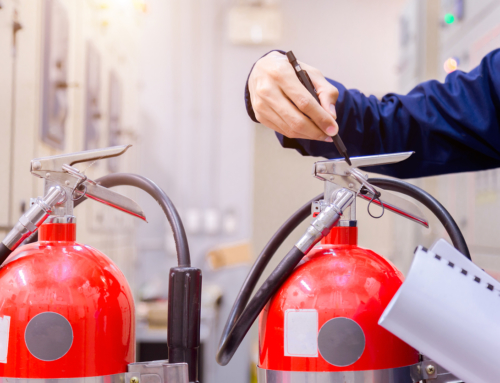Portable fire extinguishers are often the first line of defence against fires, and the chances are you aren’t too far from one right now. But like any life-saving equipment, you want to ensure that they’re always working, especially when you need them most.
With proper inspection, fire extinguisher testing, and maintenance protocols, you can ensure that your fire extinguishers are long-lasting and provide reliable protection against fires. However, attempting to do it on your own opens you and your business to the risks of DIY fire extinguisher testing that could lead to several dangers.
What is DIY Fire Extinguisher Testing?
DIY fire extinguisher testing refers to the practice of individuals attempting to inspect, test, or maintain fire extinguishers on their own without proper training or equipment. This can involve checking the pressure gauge, verifying the tamper seal, and attempting to recharge or refill the extinguisher.
However, DIY fire extinguisher testing can be dangerous and may result in personal injury, unsafe use, property damage, or legal and financial consequences if not done properly. It is recommended that fire extinguishers are only tested and maintained by trained and qualified professionals to ensure their accuracy, effectiveness, and safety.
What Are the Risks of DIY Fire Extinguisher Testing?
DIY fire extinguisher testing can be dangerous and lead to various risks. Here are some of the potential risks and dangers of DIYing the process:
1. Personal injury
Attempting to test a fire extinguisher on your own may lead to personal injuries when you’re not careful, especially when you use one incorrectly. Moreover, when testing the equipment, you might also cause harm to other people or nearby property.
Additionally, you need to be trained and accredited to test a fire extinguisher. When handled incorrectly, you might accidentally spray yourself or others with the extinguishing agent, harming the eyes, skin, and lungs. To minimise the risk of injury, it’s important to only use a fire extinguisher when necessary and to seek professional assistance.
2. Property damage
Just like personal injuries, causing significant property damage is also one of the risks of DIY fire extinguisher testing. If a fire extinguisher is not positioned or aimed correctly, it can cause damage to walls, ceilings, or other property. Additionally, you can damage the equipment and cause the extinguisher to malfunction, leading to costly repairs.
3. Increased fire risk
Attempting DIY testing on a fire extinguisher can also increase fire risk. This can happen by accidentally damaging the equipment or incorrectly testing it, which can prevent the fire extinguisher from working effectively when you need it.
Additionally, if the user is unfamiliar with the extinguisher being tested, they may inadvertently use the wrong type of extinguishing agent. This can cause a fire to spread or become more dangerous. It’s important to only test or maintain a fire extinguisher with the help of a qualified professional to ensure its effectiveness and safety.
4. Legal and financial consequences
In relation to potentially harming other people and damaging properties, you may also be held liable for damages and could face legal action. When this happens, it can result in costly legal fees, fines, or settlements. Moreover, insurance companies may not cover the damages caused by improper use, testing, and maintenance of a fire extinguisher, leaving you responsible for the full cost.
5. Environmental hazards
Lastly, DIY fire extinguisher testing can lead to environmental hazards. Fire extinguishers contain chemicals or propellants that can harm the environment if they leak during an inspection, which can also happen when attempting to recharge or refill.
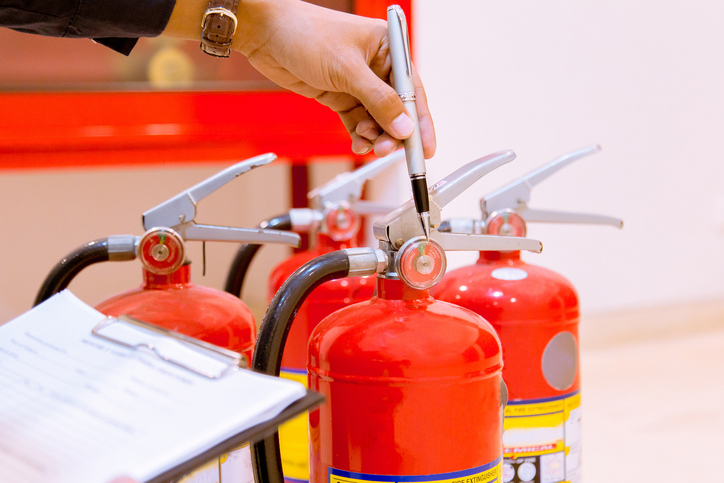
Alternatives to DIY Fire Extinguisher Testing
Now that we’ve discussed the risks of DIY fire extinguisher testing, it’s good to know what you can do instead. Since fire extinguishers and other fire safety equipment must be maintained to comply with various state and federal government standards, it’s best to seek professional assistance and inspection services. Moreover, staying educated on basic fire extinguisher safety is also recommended.
According to the NZS 4503:2005, portable fire equipment is required to be regularly inspected, tested, and serviced only by technicians with full and proper training. It also mentions that your fire extinguishers should undergo professional inspection once every 12 months.
Fire Extinguisher Testing Services from Jim’s Fire Safety
Do you need fire extinguisher inspection professionals to test and inspect your extinguishers? Our team offers a comprehensive suite of fire extinguisher inspection services to businesses all around New Zealand.
All of Jim’s Fire Safety technicians are trained in both fire and electrical safety. This means that when we come to take a look at your extinguishers, we can take care of the rest of your statutory testing requirements.
We have everything you need for fire safety in one team, giving you guaranteed peace of mind so that you do not have to unnecessarily face the risks of DIY fire extinguisher testing. This is why Jim’s Fire Safety is the most trusted name for fire extinguisher testing services all throughout New Zealand.
Get a free quote on our testing and tagging services, or give us a call at 0800 454 654 to learn more.



